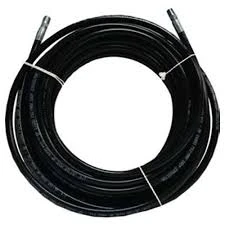Guidelines for Creating Your Own Power Steering Hose Easily and Effectively
DIY Power Steering Hose A Comprehensive Guide
Power steering is an essential component in modern vehicles, providing the driver with enhanced control and ease of steering. Over time, the power steering hose can wear out, develop leaks, or suffer from deterioration, resulting in reduced performance or complete system failure. While many car owners may opt to take their vehicles to a mechanic for repairs, replacing the power steering hose can be a manageable DIY project with the right tools and knowledge.
Understanding Power Steering Hoses
Power steering hoses transport fluid between the power steering pump and the steering gear. There are generally two types of hoses the high-pressure hose, which carries fluid from the pump to the steering unit, and the low-pressure return hose, which sends fluid back to the reservoir. Understanding the difference between these hoses is crucial for any DIY repair.
Tools and Materials Needed
Before starting the project, gather all necessary tools and materials. You will need
- A replacement power steering hose - Wrenches or socket set - Screwdrivers - Pliers - Fluid catch pan - Power steering fluid - Shop towels or rags
Step-by-Step Guide
1. Safety First Begin by ensuring the vehicle is parked on a flat surface and the engine is turned off. Engage the parking brake and wear protective gloves and eyewear.
2. Locate the Power Steering Hose Open the hood and locate the power steering pump and hoses. Identify the hose that needs replacement—typically, the damaged one will show signs of leaking.
diy power steering hose

3. Drain the Fluid Place a fluid catch pan beneath the power steering pump, then loosen the clamps on the hose and detach it. Allow the fluid to drain completely.
4. Remove the Old Hose Using the appropriate wrench, carefully unthread the old hose from the pump and steering gear. Take note of any connectors or brackets, as they will need to be reinstalled with the new hose.
5. Install the New Hose Position the new power steering hose and thread it onto the pump and steering gear. Ensure it fits snugly and securely. Reattach any connectors or brackets that were removed during disassembly.
6. Reattach Clamps Tighten the clamps firmly but take care not to overtighten, as this could damage the hose.
7. Refill Power Steering Fluid Pour new power steering fluid into the reservoir until it reaches the appropriate level as indicated on the dipstick.
8. Test the System Start the engine and turn the steering wheel from lock to lock a few times while monitoring for any leaks. This action will help circulate the new fluid and remove air from the system.
9. Check Fluid Levels After testing, check the fluid level again and add more fluid if necessary.
Conclusion
Replacing a power steering hose may seem daunting, but with the right tools and a bit of patience, it can be a simple and rewarding DIY task. Not only can this save money on labor costs, but it can also empower you as a car owner. Maintaining your vehicle is crucial for safety and performance, and taking on projects like this one is a great way to learn more about your car. Always consult your vehicle's manual for specific instructions related to your model, as differences may exist. Happy wrenching!
-
Ultimate Spiral Protection for Hoses & CablesNewsJun.26,2025
-
The Ultimate Quick-Connect Solutions for Every NeedNewsJun.26,2025
-
SAE J1401 Brake Hose: Reliable Choice for Safe BrakingNewsJun.26,2025
-
Reliable J2064 A/C Hoses for Real-World Cooling NeedsNewsJun.26,2025
-
Heavy-Duty Sewer Jetting Hoses Built to LastNewsJun.26,2025
-
Fix Power Steering Tube Leaks Fast – Durable & Affordable SolutionNewsJun.26,2025

